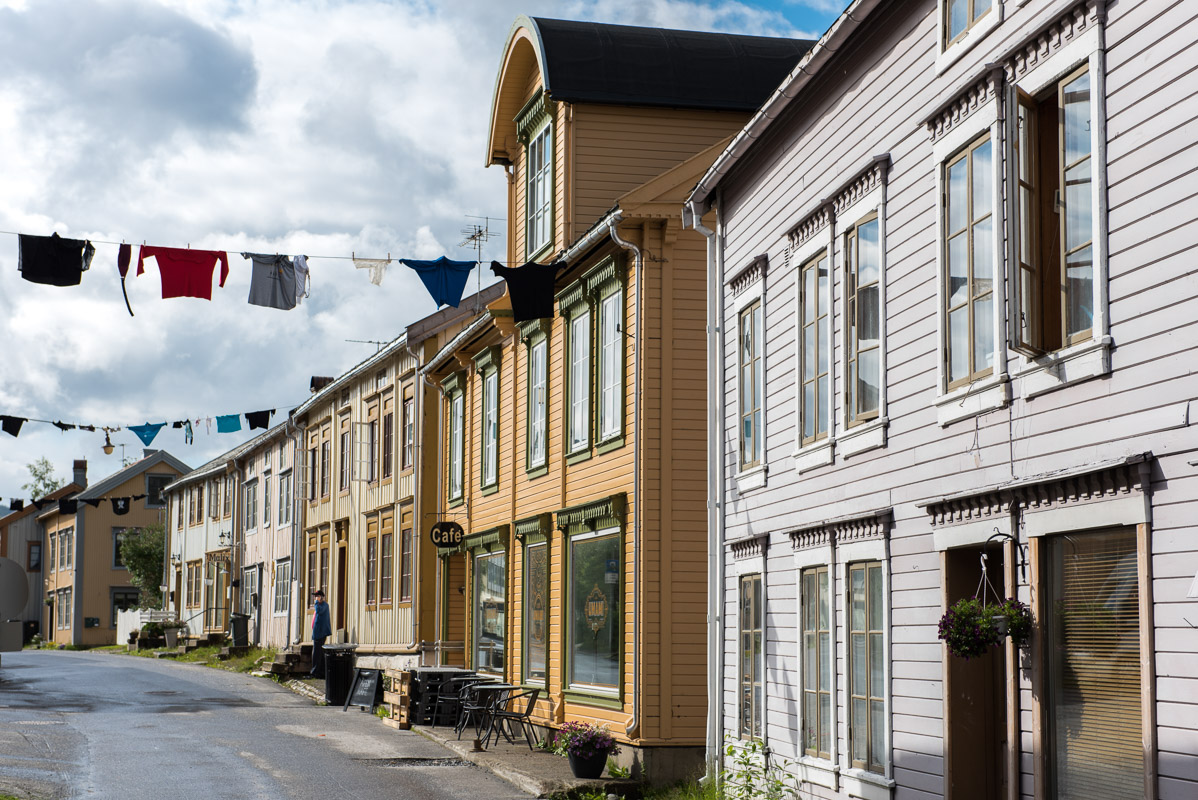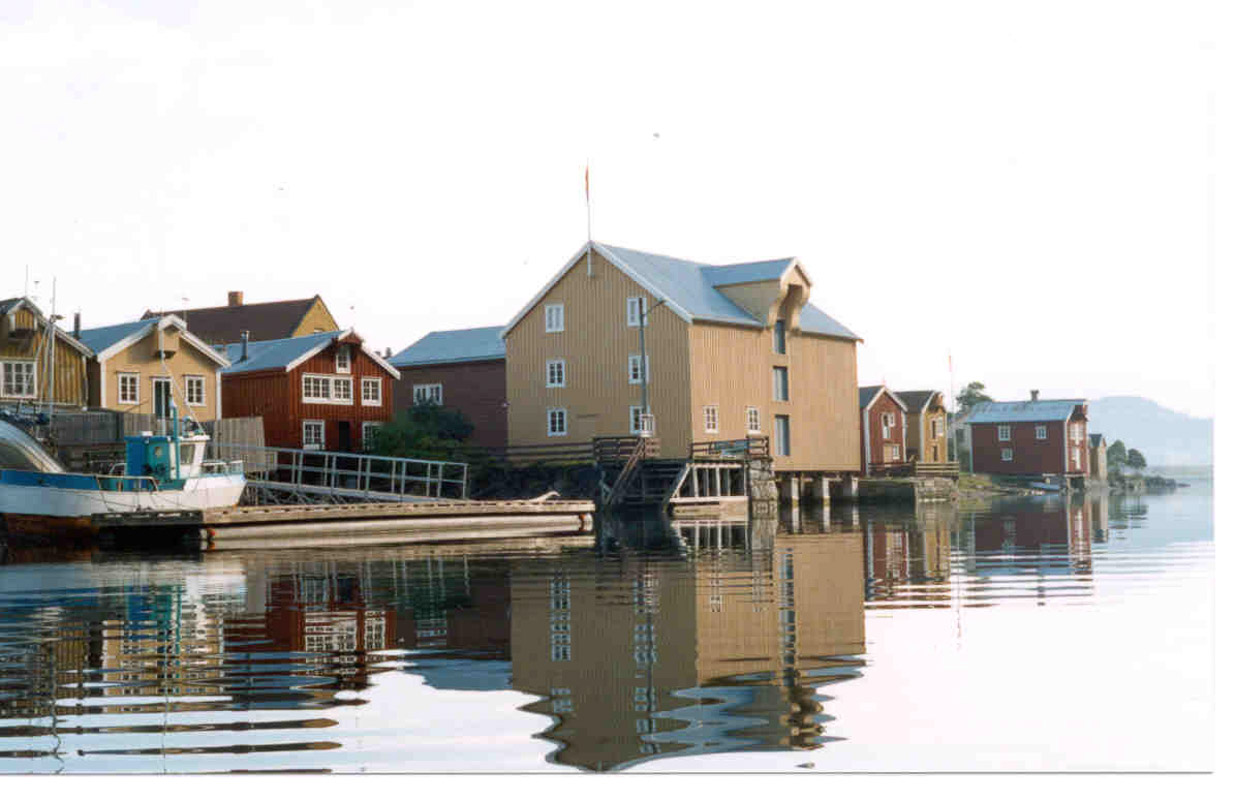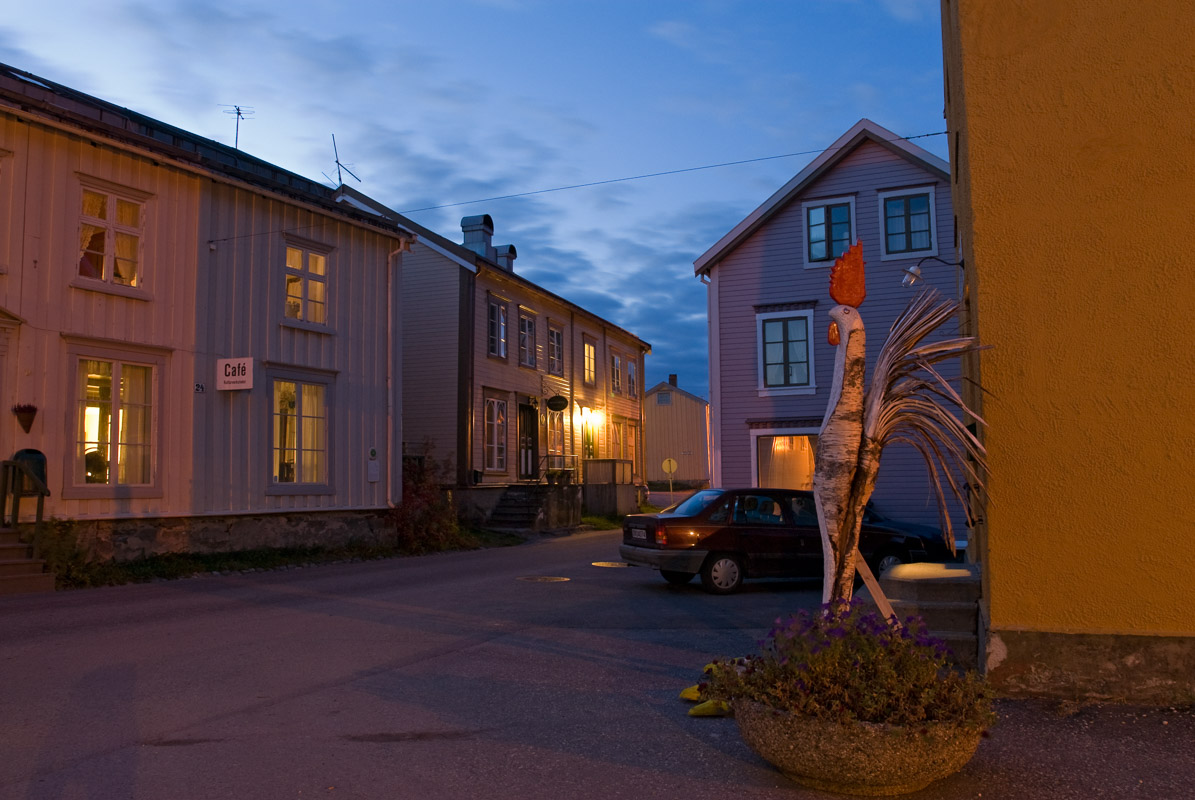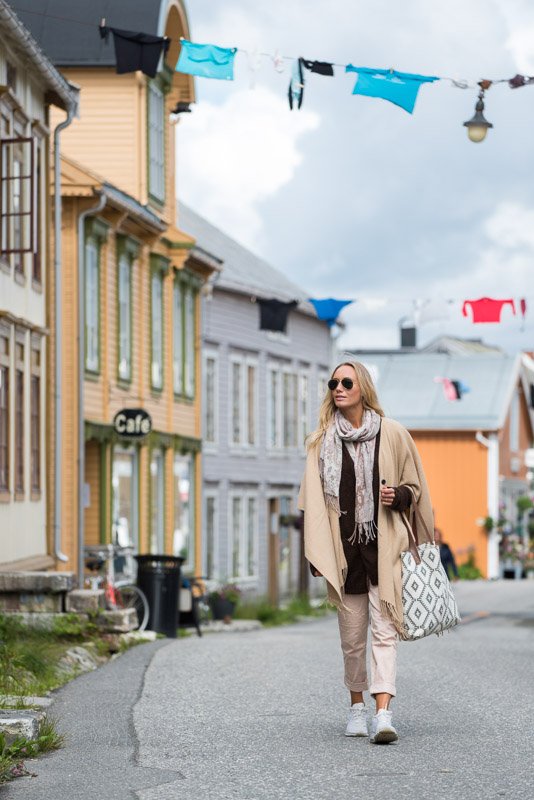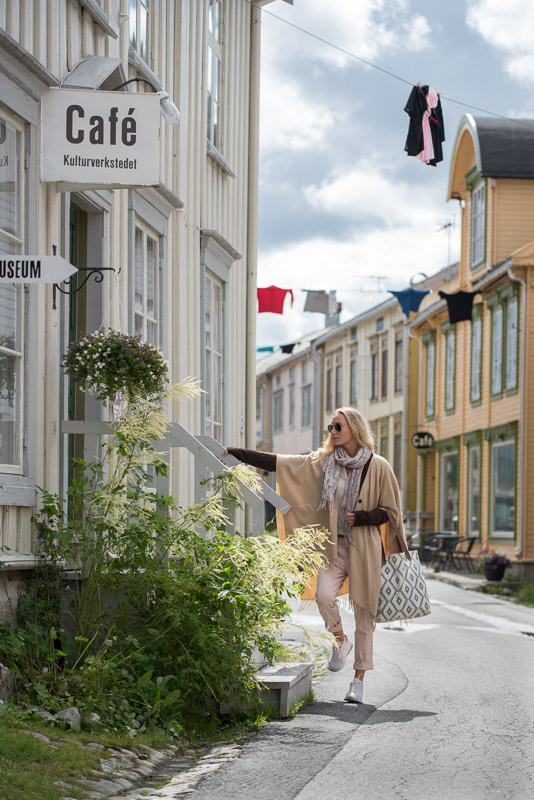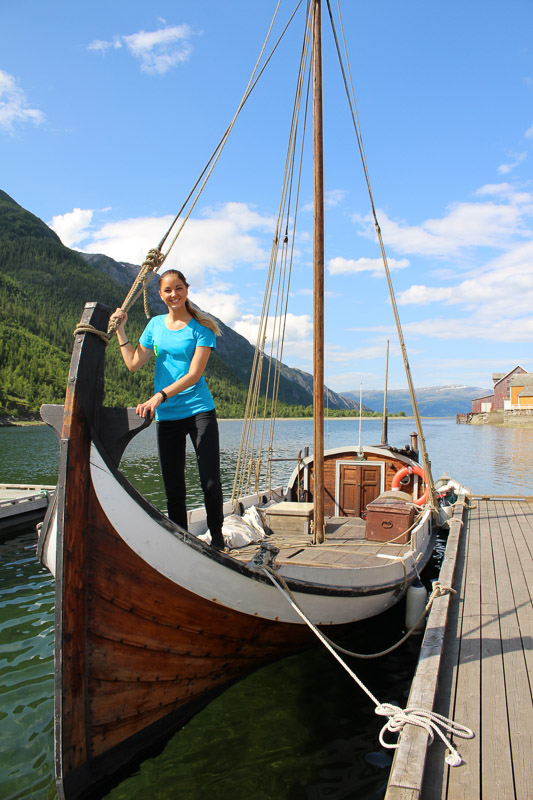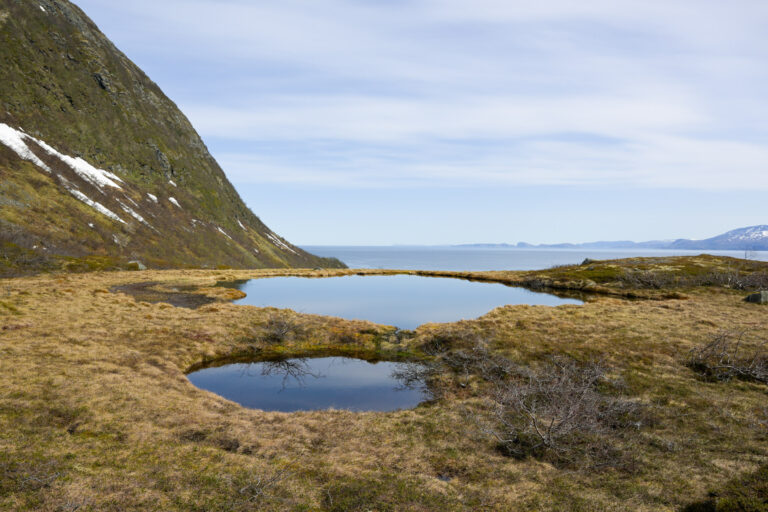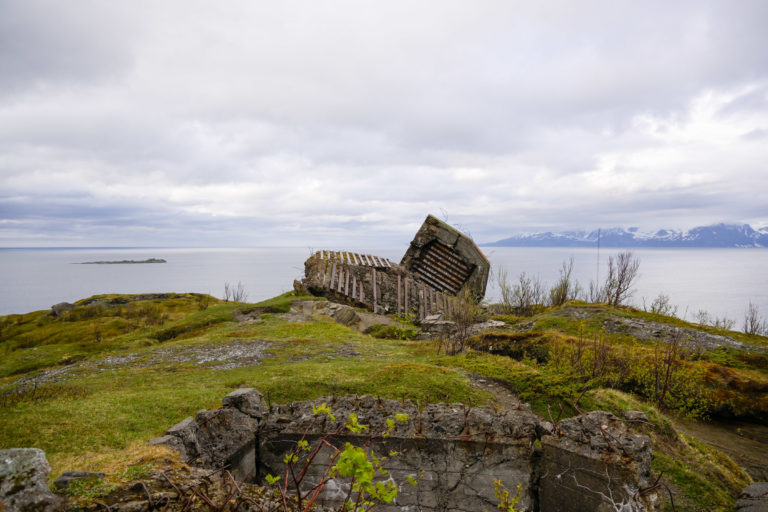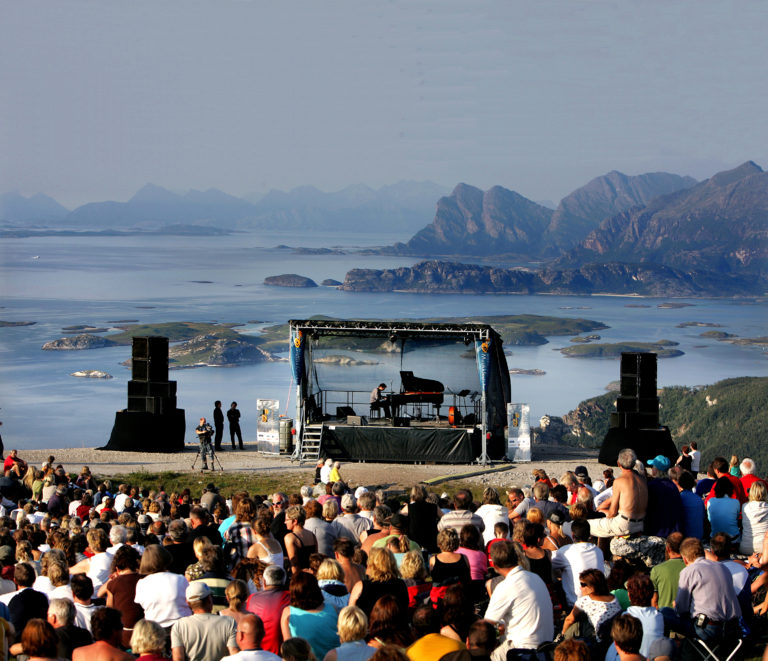In 1866, a veritable “Gold Rush fever” broke out in Mosjøen – the idyllic little town “in the middle of Norway”. A large sawmill (known as the ”English sawmill”) was established, which made Mosjøen a meeting place for English timber barons, forestry workers from Odalen, Sami lumberjacks, Swedish mountain farmers come to town to barter, and tailors purveying the latest styles from London and Paris. The English timber barons are long gone, but with its wharfs, warehouses, boathouses, mercantile buildings and houses – not to mention the mass of outbuildings, shacks and lean-tos that huddle amongst them – Sjøgata (Sea Street), is today a lively and picturesque part of central Mosjøen.
At one point Sjøgato was a slum
At the end of World War II, Sjøgata was left run-down and in decline and many viewed it as a disgrace to the town. It was also a highly unpopular place to live. Many associated this part of town with poverty, where the “old fellers” who cycled into town to hang around on the street corner spitting tobacco, would often share a bottle of the hard stuff before cycling home again.
Sjøgato was nearly turned into a car park
”Pull it all down”……..
was the verdict in the development plan proposed by Vefsn municipal council in 1970. An economic boom after the war had created a huge need for parking spaces in central Mosjøen and most people were in favour of demolishing the buildings in Sjøgata. Fortunately there were protests. Around a hundred people saw the value of preserving the street, and the local inhabitants and other interested parties mobilised increasing opposition to demolition.
Sjøgato was cleaned up and made new
The Norwegian Architectural Conservation Year 1975 gave rise to a nationwide wave of publicity with regard to what was happening in Mosjøen, and funds were appropriated to conserve the historic environment in Sjøgato. Important to these efforts were the assistance and support of architects, paint and colour specialists and experts from the Directorate for Cultural Heritage. The main objective was to make Sjøgata a living part of central Mosjøen. One of the projects involved turning the largest building into a cultural and social centre and café, known today as Kulturverkstedet (the Culture Workshop).
Is it called Sjøgata or Sjøgato?
It says Sjøgata on the signs, in væfsning, the local dialect, one says Sjøgato. The old distinction between strong and weak female gender forms lives on here. Gatæ (street) is a weak feminine, and gets the definite ending (comparable with the English “the”) –gato, so Sjøgato. In standard Norwegian, it would be called Sjøgata, with a final a. “In Mosjøen, they speak with o’s” one says in Helgeland, pointing to the fact that the local dialect preserves both words and grammatical forms that have vanished many other places in Norway. We are much taken with the local dialect, and have chosen to break every orthography rule when it comes to Sjøgato.
Kulturverkstedet is where everything happens
The building which houses Kulturverkstedet was erected in 1862 by the merchant Jacob C. Jacobsen. In its time, it was the largest and grandest mercantile building in Mosjøen. The work to conserve the wooden building began in 1981, and in 1984 a multi-purpose cultural centre emerged in all its glory. Kulturverkstedet is today a well-known and loved centre for many cultural activities in Mosjøen. It is also a venue for meetings and conferences but, most of all, it is an important place for people to meet socially. The café serves traditional dishes from Vefsn, and in Galleriet you can enjoy and purchase the works of professional artists – most of them from North Norway. Galleriet is one of the largest galleries in this part of the country, displaying and selling art to tourists and locals as well as local businesses. Galleri Stallen, just behind the cultural centre, houses the Alrunen antiquarian bookshop.
Lunchtime concerts are held every Friday
Some of the most popular events at Kulturverkstedet are the lunchtime concerts held every Friday throughout the year. Here, in Galleriet, everyone who likes listening to good music can enjoy hearing local musicians perform – both professional and amateur – and socialise at the same time.
You can stay in historic buildings during your stay
The self-catering guest apartments in Sjøgata, which visitors can rent, are named after previous inhabitants – such as ”Gabrielsengården”, ”Ola Oktoberbrygga” and ”Aabakkengården”. Here you can enjoy your morning coffee at the kitchen window – just as they did in the 19th century. The houses are full of old-world charm and decorated and furnished in the style of the period, but have all the modern conveniences to ensure guests a comfortable stay. They may all be furnished differently, but each house has good beds, and a kitchen, living room and bathroom.
The oldest hotel in Northern Norway is over 200 years old
The venerable Fru Haugans Hotel is situated by the sea at the southern end of Sjøgata, and is surrounded by a large, beautiful garden. The hotel also has a guest mooring. Dating back just over 200 years, Fru Haugans is the oldest hotel in North Norway and has had female proprietors for several generations. Now restored and modernised, the hotel has nevertheless retained much of its period style and intimate atmosphere.
Visit Helgeland Museum to learn more about Sjøgata
Helgeland Museum has its own wharf on Sjøgata and offers a range of exciting exhibitions all year round. The permanent exhibition on the history of the town shows the fascinating story of the colourful life in Sjøgata and in Mosjøen – the oldest town in Helgeland. The museum also puts on changing themed exhibitions, concerts and other events.
Authentic stores and cafes are found on Sjøgata
Since times gone by there have been cafés and hostelries of many kinds in Mosjøen, and especially in Sjøgata. At the Vikgården Landhandel og Kaffebu general store and café, the present-day hosts wish to maintain and continue that tradition. Vikgården is a mercantile building dating right back to the 1880s, housing a real old-fashioned general store, where you are surrounded by antique objects, signs and other collectibles, giving a fascinating glimpse of life in days gone by. The Vikgården café serves coffee brewed in the old-style way and with delicious, locally made cakes and other delicacies. Lunch is served daily, and the café also sells local produce from all over Helgeland. Be sure to visit and experience the special atmosphere and feeling of nostalgia in this authentic old store.
Residents are proud of their street and can show you around
The local people are proud of Sjøgata and are happy to show visitors around. Enjoy a stroll through the old 19th century quarter and notice the traditional timber building techniques and tools, decorative details and use of colour. Visit the little shops and craft workshops along the street and – not least – do as the locals do: pop down to the café for a coffee – especially in the morning! Hear the buzz of talk and laughter over the tinkling of coffee cups as the world’s innumerable problems are “solved”. Café culture has a long history in Mosjøen, and Sjøgata in particular was known for its large number of coffee stalls and cafés.
There aren’t just shops, people live here too
Sjøgata in Mosjøen is a vibrant, living milieu with shopping, accommodation, galleries, art exhibitions, a museum and much more. Many of the houses in the street are lived in by ordinary locals who are used to tourists walking through their gardens or peeping in their windows.
Mosjøen is found in the middle of Norway
- Mosjøen is found on the E6 road
- From here it is a short distance to the coastal road and the picturesque Helgeland coast
- Mosjøen has an airport
- Mosjøen is a stop on the trainline
- Nearby are the Okstindan mountains and the beautiful Salmon River
